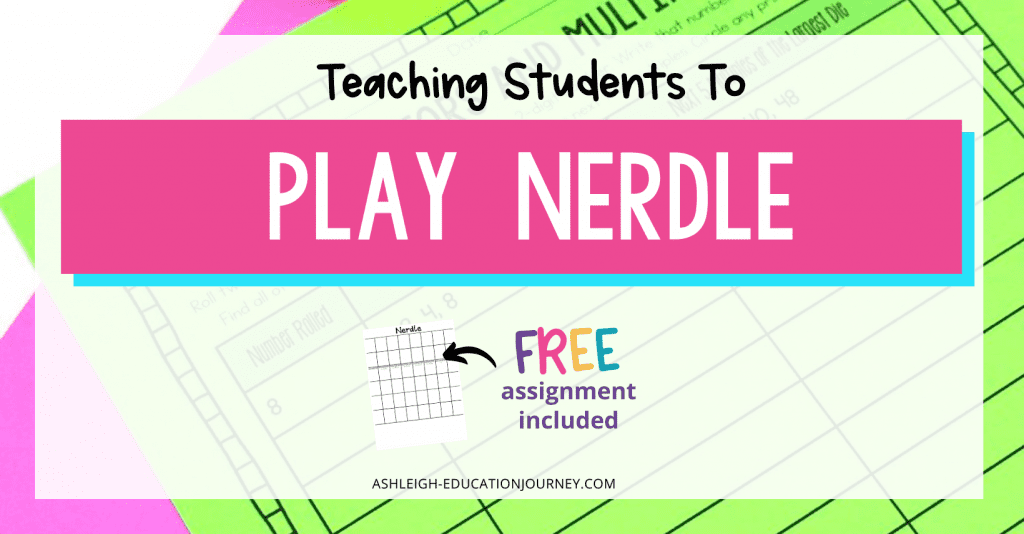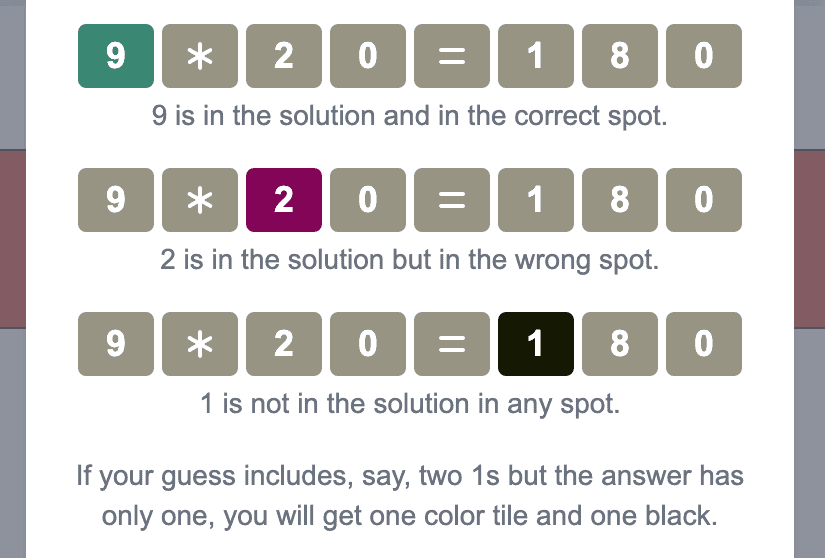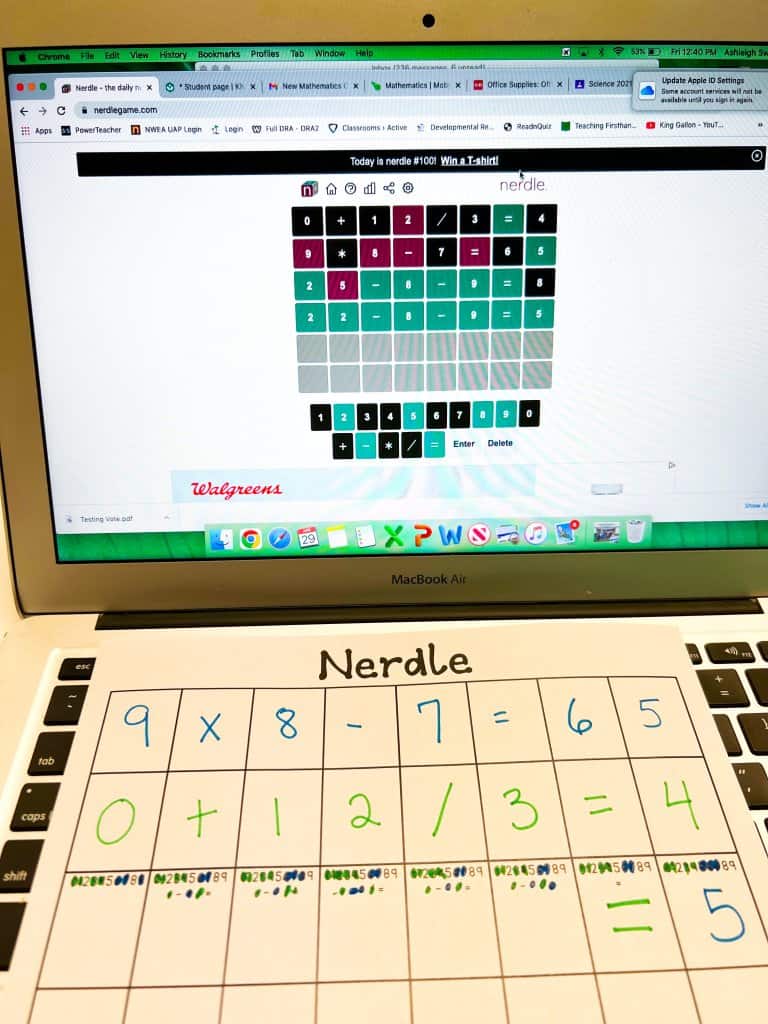
In this post I can’t offer you any eye-catching graphics or fun classroom displays. But, I would feel like I was holding out if I didn’t share one of our new favorite classroom games. Notice the “our”. My students and I agree on this one! Typically they favor games that offer a lot of fun-but little educational value, while I prefer games that are heavy on content. This provides both.
NERDLE is similar to Wordle, except that it is mathematically based. The object of the game is to guess the NERDLE in six tries. After each try, the color of the tiles change to show how close the guess was to the solution.

Rules
- Students may use digits 0-9 and the + – * / = keys. I recommend making sure students are familiar with the * for multiplication and the / for division.
- There is only one equal sign in the WORDLE equation.
- There are only numbers to the right of the equal sign, not another calculation. While I understand this for the purpose of the game, I do reinforce that that is not always true in all situations-only for this particular game.
- The standard order of operations applies.
- Commutative answers are accepted.
Classroom Reality
To be honest, the first couple of times we tried NERDLE, my class didn’t enjoy it-at all. Despite teaching through problem solving all year, it wasn’t quite accessible to all but a couple students. Most needed a little support.
First, we worked on finding a starting number. I was careful to explain that there were many strategies to begin with that would work. I was simply sharing the strategy that I personally prefer. If a student already had a method that worked, I let them run with it.
I like to start by using all possible digits and operations in my first two turns. As a part of a math lesson, I gave students time to try to determine how to do this. Even if they aren’t successful, it’s still a lot of computation and problem solving time. After I saw that it was time to move on, I shared the two equations I begin with.
9×8-7=65
0+12/3=4
Once some students had a starting place, they were confident and ready to take off on their own. Other students needed a little more support. I recognized that these students hadn’t fully grasped the idea of elimination, or how to effectively use the process of elimination, so I broke it down for them with a graphic organizer.

We completed the first two equations together. Then, I modeled how to eliminate digits with a graphic organizer. This helped students see what digits and operations remained and simplified the process.
After using this graphic organizer, I had a handful of students need additional modeling. I provided that while other students worked on the daily NERDLE independently.
While we thoroughly enjoy the game, it’s not something I would have time to implement for an entire school year. However, it is perfect for the end of the school year. It’s highly engaging, doesn’t require prep, doesn’t require materials, and it requires problem solving and the application math strategies.
If you’d like to use the graphic organizer, you can download it here!



I’ve had success using a first equation of 1 2 + 3 5 = 47. Knocks out 6 digits quick.
I really love maxinerdle too. Looking forward to a super maxinerdle version.